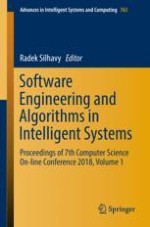2019 | Buch
Software Engineering and Algorithms in Intelligent Systems
Proceedings of 7th Computer Science On-line Conference 2018, Volume 1
herausgegeben von: Radek Silhavy
Verlag: Springer International Publishing
Buchreihe : Advances in Intelligent Systems and Computing
